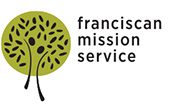5 Tips for Talking About Restorative Justice

Editor’s note: Originally published on the Catholic Mobilizing Network blog on January 30, 2023, returned missioner Maeve Gilheney-Gallagher shares five tips on how to talk about restorative justice with those who have never heard of it.
My first introduction to restorative justice was accidental.
I was one hour into a 12-hour road trip from my parents’ home to the college I was attending at the time. I was listening to the local public radio station when an interview with John Paul Lederach began broadcasting.
Dr. Lederach, who is the co-founder and first director of the Eastern Mennonite University’s Center for Justice and Peacebuilding, shared stories from his conflict transformation experiences in places like Somalia, Northern Ireland, and Colombia.
Listening to the interview, I was struck by how Dr. Lederach emphasized forgiveness and creativity as methods of resolving conflict. He presented conflict as an opportunity for transformation, and rooted his profession in his faith tradition.
I remember thinking that Dr. Lederach’s way of approaching conflict was radically sensible. And then he gave it a name: restorative justice.
I stored the interview in the back of my head for the remainder of my drive until I arrived back on campus. When I got there, I started researching everything I could about restorative justice and peacebuilding.
I didn’t know it at the time, but this unexpected introduction to restorative justice was a major catalyst in my life. It helped lead me to working in ministry, all because Dr. Lederach gave voice to many beliefs I had long held, but never had the language to explain.
Recently, I attended a Deepening Circle with Catholic Mobilizing Network’s RJ Ministry Community of Practice where we unpacked this very topic: how do you share restorative justice with someone in a way that resonates with them on a personal level, in a way that just makes sense?
All of us who participated in the deepening circle are still on a learning journey. But here are five tips that I can share with you, gathered from my own experiences and from the wisdom of this circle, for introducing your friends, family, and community to restorative justice.
1. Think about your context and audience
Who are you talking to? You probably relate to your mother differently than you relate to your best friend or your work colleagues. Dialoguing around the dinner table is not the same as confronting someone with whom you are in conflict.
When introducing restorative justice — a concept that someone might be unfamiliar with or have preconceived notions about — it’s important to consider these factors. While everyone has experienced being harmed and harming others, the way we each approach reconciliation may be different. It is necessary to consider the lived experiences of the person you’re talking to before you delve into the deeper aspects of restorative justice, because restorative justice is never “one-size-fits-all.”
2. Find common values
Let’s face it: sometimes people are resistant to new ideas. When talking to someone who seems uncertain about restorative justice, consider starting from a place of connection and agreement, rather than one of discord.
Maybe you and a friend don’t see eye to eye on a contentious issue like the death penalty. If you approach it through a restorative justice lens and they understand it through a punitive one, you could spend all day talking circles around each other.
So instead of diving right into the issue at hand, first try finding a common value. Do you both value safety in your neighborhood? Do you both believe that murder victims’ families need more healing and support?
When you point out these shared values, they can bring you closer to understanding one another. This lays the foundation for sharing about how restorative justice can help fulfill these values.
3. Encounter the person sitting across from you
During our recent CMN Deepening Circle, a community member said, “Let every conversation we have be an ‘encounter.’”
That phrase struck me. When we practice restorative justice we open our hearts to others and embrace them fully, regardless of where they are in their journeys. Sometimes, that might mean accepting that a person is not ready or willing to hear about restorative justice at all.
When that is the case, it is not our role to push any specific agenda or an outcome. Instead, we can focus on being present to that person exactly where they are and do our best to be living representations of restorative values like respect, empathy, and mutual care.
Dr. Lederach notes, “Peacebuilding and the even deeper hope for restored and healthy relationships requires patience, a lot of deep listening, and forms of accompaniment. That is not always easy across the lines of division, and there are not shortcuts.”
4. Be creative
Most people recognize the Albert Einstein quote, “Insanity is doing the same thing over and over and expecting different results.” And yet, we continue to use punitive measures in our relationships, justice system, and communities, and wonder why people don’t change their harmful behaviors.
Restorative justice asks us to be creative in response to these deep-seated problems, so that we can break destructive cycles — rather than simply repeating them. This same spirit of imagination can be employed when we introduce restorative justice to new audiences.
When talking to someone about restorative justice, ask them to consider: Is the current system working? What are ways to hold people accountable for their actions that allow for real healing? How can we stop relying on superficial solutions that mask deep wounds?
When you encourage curiosity and creativity, ideas we’ve never dreamed of can become a beautiful new reality.
5. Listen
Restorative justice helps us strengthen the bonds in our relationships so when conflict arises, those relationships are resilient enough to endure.
As much as I want to share how transformative restorative justice has been in my life, if I don’t take the time to actively listen to the person I’m sharing with, they won’t be receptive. What are their needs? How do they find healing after hurt?
Restorative justice is an invitational process. We need to approach it with an attitude of humility and openness, if we ever hope for others to do the same.
Opening the Door to Transformation
What might my life look like had I not been introduced to Dr. Lederach’s conflict transformation experiences on that road trip years ago? Would I still have gone on to one day take up the work of restorative justice myself?
How someone comes to learn about restorative justice can open the door to profound transformation. If we can commit to thoughtfully engaging the people around us in reexamining our responses to harm and conflict, there’s no telling how wide the ripple effects might spread.
Question for reflection: How do you work to incorporate the principles of restorative justice into your life? With whom can you share the ideas behind restorative justice?
Tagged in:

